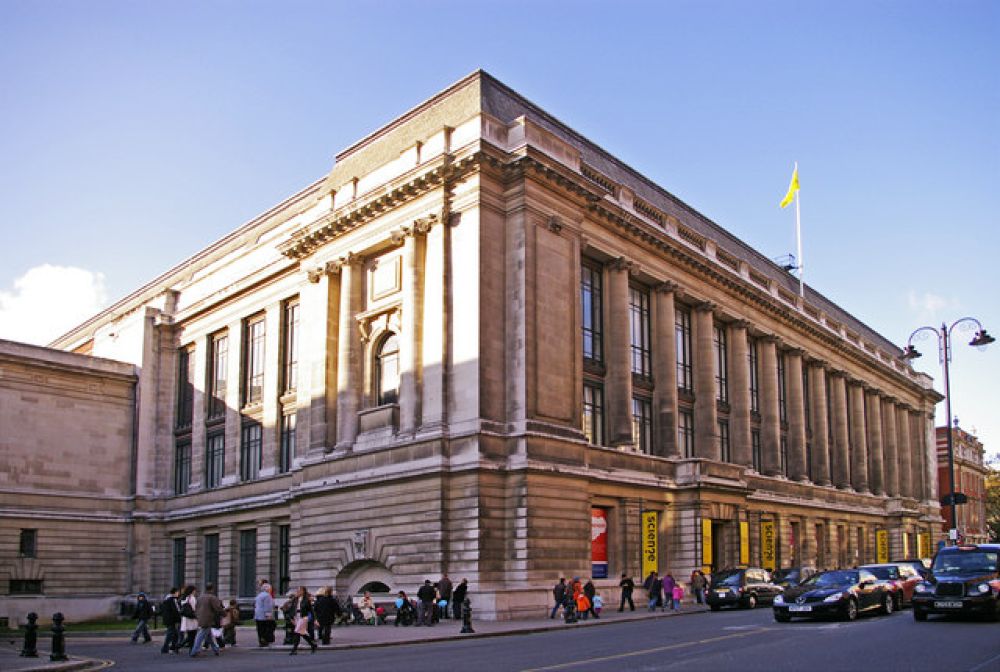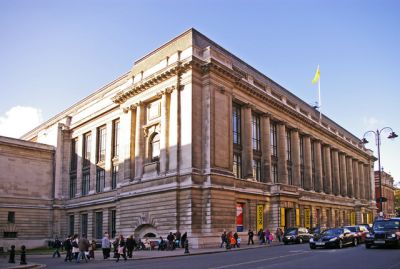

Explore the wonders of science through interactive exhibits and live demonstrations in the highly engaging Wonderlab: The Equinor Gallery. With over 50 mind-blowing exhibits, from live chemistry experiments to exploring light and sound through hands-on activities, this gallery ignites everyone's curiosity in science. Visitors of all ages can indulge in scientific exploration and get inspired by the vast world of STEM. A highlight of the gallery includes the live science shows, where enthusiastic educators perform spectacular demonstrations that bring scientific concepts to life. A visit to Wonderlab is an educational experience, offering profound insights into the marvels of science in an environment that encourages play, experimentation, and discovery.
Housing the world’s oldest clock and watch collection, The Clockmakers' Museum is a treasure trove of historical timepieces dating back to the 1600s. The collection contains more than 1,000 watches, 80 clocks, and 25 marine timekeepers, along with a breadth of horological ephemera. Wander through the spectacular array of chronometers, and discover the intricate artistry and innovation that drove the evolution of timekeeping. Fascinating exhibits include the progression of the watch from pocket to wrist, the influence of clockmaking on London's history, and the technological advancements that have shaped the way we measure time. This specialized museum offers a unique perspective into the mastery and mechanics behind horology and provides an educational insight into the science of time measurement.
The Information Age Gallery celebrates more than two centuries of innovation in information and communication technologies. Spread through six zones, each dedicated to a different communication technology – The Cable, The Telephone Exchange, Broadcast, The Constellation (satellite communications), The Cell (mobile technology), and The Web (the internet). The gallery showcases key pieces from the history of broadcasting and communication, including the intricate workings of the first transatlantic telegraph table and the BBC's first radio transmitter. Visitors can delve into the stories of people who have invented, operated, and been affected by these communication technologies, allowing for a reflection on how they have shaped modern society. Expect to spend time engaging with interactive displays that explain and demystify concepts like coding, satellite building, and more.
This interactive exhibition is perfect for young people interested in engineering and considering it as a future career. 'Engineer Your Future' showcases the creativity and problem-solving aspects of engineering. Visitors can engage in hands-on design challenges, use real-world engineering systems in a transportation simulation, and discover the stories of inspirational engineers. The exhibition helps to demystify the field of engineering, demonstrating how engineers use their skills to tackle global challenges. The various interactive games and activities encourage critical thinking and collaboration, highlighting the diverse opportunities within the engineering sector. It is an excellent opportunity for young people to explore their potential and consider the impact they could make in the world through pursuing a career in engineering.
The Garden is perfect for younger visitors who are just beginning their journey of discovery into the principles of the world around them. Located in the basement, The Garden is a hands-on area designed to make learning about science fun and engaging. Children can explore fundamental scientific concepts such as construction, water, light, and sound through interactive exhibits. The colorful, interactive environment allows children to splash in the water play area, build structures with soft blocks, play with shadows, and more. This area has been especially designed to stimulate the senses and to help younger visitors understand the scientific forces they encounter in everyday life. It's an ideal place for families to enjoy science together in a play-oriented context.
Home to a vast array of medical artifacts, this collection, entitled Medicine: The Wellcome Galleries, is the world's largest medical gallery. The exhibits provide a rich historical context for understanding medicine and health in today's world. Each gallery covers a different facet of medical advancement and includes everything from ancient medical equipment to the latest in biomedical technology. Notable exhibits include the first MRI scanner, Sir Alexander Fleming's penicillin mold, and even a DNA sequencer. Besides exploring the artifacts, visitors can engage with interactive installations that bring the history of medicine to life. Through a combination of storytelling and innovation, this gallery captures the human stories behind the objects on display, exploring our quest to understand and treat illness and disease.
Step into the Flight Gallery and immerse yourself in the development of flight, from the earliest hot air balloons to the complexities of 20th-century aircraft. This impressive gallery features full-size planes hanging from the ceiling and includes scale models of significant moments in aviation history, such as a model of the Montgolfier brothers' hot air balloon. The exhibits trace the technological advancements in flight, showcasing engines, and airplanes while also providing a socio-historical context of air travel's impact on society. Visitors can sit in a mock-up of a Red Arrows aircraft and a flight simulator, offering a taste of being in the pilot's seat. It's a fascinating exploration for anyone interested in the aeronautics industry and the science of flight.
The Sun: Living With Our Star is an exhibition that explores humanity's ever-changing relationship with our closest star. The exhibit uncovers concepts such as the science of the Sun, how it shapes our sense of time, and its critical role in our existence. Artifacts on display range from ancient sundials to modern solar-powered devices, demonstrating our reliance on sunlight throughout history. Visitors learn about solar phenomena like sunspots and flares, and the exhibition discusses the potential dangers and benefits of solar activity in terms of our modern-day infrastructure. It also looks to the future, speculating on how we can harness the Sun's energy in sustainable ways. Engaging and interactive, this exhibit allows visitors to deepen their understanding of the Sun's influence on life and our planet.
Designed by the world-renowned Zaha Hadid Architects, the Mathematics: The Winton Gallery demonstrates the beauty and creativity of mathematics. The gallery itself is a work of art, arranged to follow the airflow around an aircraft in the center, showcasing the link between mathematics and fluid dynamics. Within the gallery, exhibits span 400 years, illustrating how mathematicians, their tools, and ideas have shaped the modern world. From navigation and war to gambling and art, the exhibition examines how mathematical practice has directed human progress. Interactive displays and diverse historical artifacts make abstract mathematical concepts tangible, connecting them to everyday life and highlighting their place in the world’s development. It is a space that is as educational as it is visually striking, inspiring a newfound appreciation for the role of mathematics in our lives.
Exploring Space Gallery takes visitors on an extraordinary journey through the history of space exploration. The gallery is filled with awe-inspiring objects such as a life-size replica of the Eagle—the lander that carried astronauts to the Moon during the Apollo 11 mission. Standing beneath real rockets, visitors can sense the scale and ambition of space travel. Exhibits tell the stories of the space race, the challenges of space travel, and the scientific discoveries made along the way. Touch a piece of the Moon brought back by the Apollo missions, see space suits used by astronauts, and learn about the future possibilities of space tourism. This gallery captures the adventure of space exploration and the human drive to discover what lies beyond our planet.
